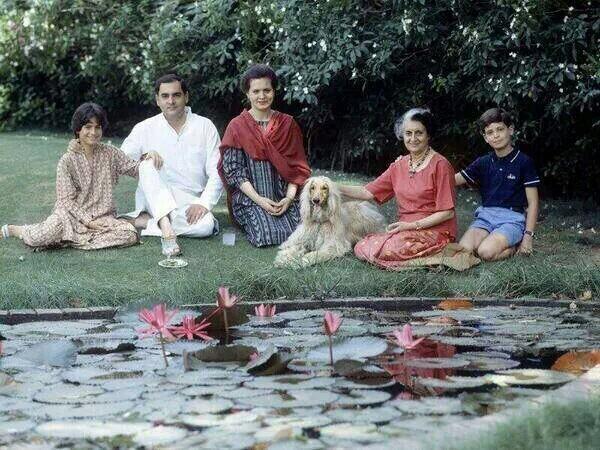
Gleaner column, Nov 30, 2017
In India, a case with potentially sinister undertones has divided media. The death of High Court Judge BH Loya in December 2014 is raising questions about the integrity of the judiciary and the political machinery of the country. If what is suspected is found to be true it implicates the Chief of the ruling party, BJP President, Amit Shah.
On November 26, 2005, a man in his thirties named Sohrabuddin Sheikh was gunned down by a team of police in Gujarat in what is known in India as an ‘encounter’ killing. Essentially a form of extra-judicial killing of people in their custody, Indian police are known to eliminate suspected criminals and gangsters in fake encounters, where they claim the suspect was shooting at the police while attempting to escape and “the gunfire is returned” killing them. Sound familiar?
It later emerged that contrary to the police version of events, Sheikh was travelling in a luxury bus with his wife, along with a friend when all three were abducted from the bus by Gujarat Police, who killed Sheikh on November 26, and his wife on November 29. According to an article in Scroll.In the police would later claim, as they are wont to do, that the individuals killed were dreaded terrorists, with plans to assassinate Modi and other senior leaders, or launch terror strikes, but rarely would there be any convincing evidence to confirm such allegations. No postmortem or statutory magisterial inquiry followed the killings.
The truth was much simpler. After pressure from Sheikh’s brother prompted a court case and a Central Bureau of Investigation (CBI) inquiry it emerged that Sohrabuddin Sheikh was a member of a criminal gang that had been in cahoots with some Gujarat police officers and political leaders, operating an extortion racket in neighbouring Rajasthan. After Sheikh’s gang threatened highly-connected marble businessmen in Udaipur his political and police bosses felt that Sheikh was getting beyond their control, and needed to be eliminated. They could not, however, risk charging him formally, for fear he would expose his powerful partners in crime.
The investigation that followed allegedly pointed at none other than Amit Shah, then Home Minister of Gujarat, as having given the orders to eliminate Sheikh. “According to the CBI charge-sheet, the killing was orchestrated by senior police officers on the orders of Gujarat Home Minister Amit Shah and former Rajasthan Home Minister Gulab Chand Kataria, who was also a senior BJP leader.” A supplementary charge-sheet filed by CBI on May 6, 2013, alleged that the owner of RK Marbles and the Rajasthan Home Minister conspired to kill Sheikh as he was allegedly trying to extort money from RK Marbles. According to the article “The CBI further charged that the killing was outsourced to the Gujarat Police in consultation with Amit Shah, the Minister of State for Home of Gujarat.”
In May 2013 Amit Shah along with 10 or more other police officers was charged and jailed for the extra-judicial murders and involvement in criminal extortion activities. A year later, however, there was a change of government with Narendra Modi’s party, the BJP, sweeping to power. Suddenly everything changed. The trial continued but Amit Shah now refused to appear in court. The trial judge, JT Utpat, reprimanded Amit Shah on June 6, 2014, for failing to appear in person, ordering him to present himself in court on June 26, 2014.
Mysteriously on June 25, 2014, only a day before this scheduled hearing, Judge Utpat was transferred to a different court, and replaced by Judge BH Loya. When Amit Shah again failed to appear in person at the trial Judge Loya also expressed disapproval, ordering him to appear in court on December 15. In the early hours of December 1, 2014, in circumstances that his family claims were suspicious, Judge Loya, with no history of cardiac problems, suffered a sudden heart attack and died. Among other things, his sister claimed that Mohit Shah, then chief justice of the Bombay high court, had offered her brother Rs 100 crore (approx. US$15 million) to give a “favourable” judgment in the case.
“Within weeks of Judge Loya’s death, on December 30, 2014, the third judge to hear the case, MB Gosavi, discharged Amit Shah from the Sohrabudin Sheikh fake encounter case. Gosavi said he saw no evidence against Shah, and instead said he “found substance” in his main defence that the CBI had framed him “for political reasons”. In so doing, Gosavi ignored crucial pieces of evidence such as police officer Raiger’s categorical statement that Amit Shah had instructed obstruction of the investigation, and his phone records.”
Amit Shah was soon elevated to the post of President of the BJP. Perhaps because of this, despite the sensational nature of these events and their importance to the nation, mainstream media in India steered clear of reporting on or investigating Judge Loya’s untimely passing until a magazine called Caravan undertook to do so two weeks ago. Since then the Indian Express and certain key newspapers have published articles insisting there was nothing suspicious about Judge Loya’s death.
Influential journalists such as Arun Shourie, a former member of the BJP, disagree. “Every media house should have been running to develop that story,” he said a few days after the Caravan story emerged. “It is the end for conventional media—not only because it is being overtaken as a source of news by the new media, but because of its cowardice and greed…There is a Zulu proverb—a dog with a bone in its mouth can’t bark. That is the condition of the mainstream media today.”

































































